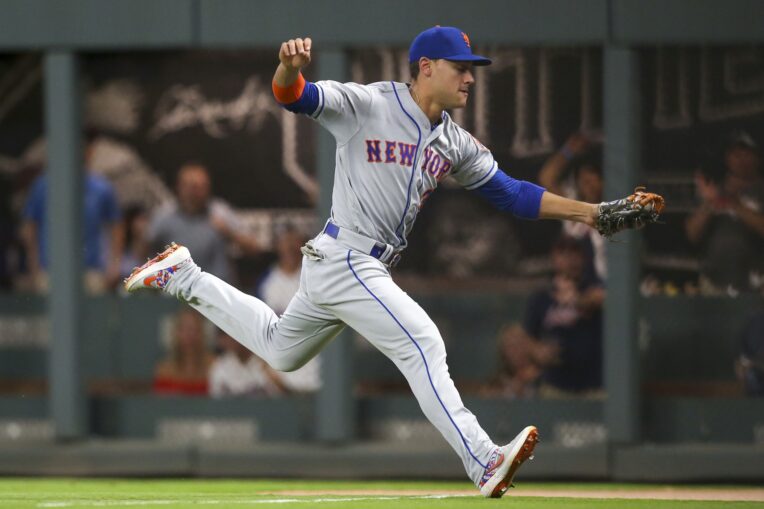
New York Mets general manager Brodie Van Wagenen was outwardly confident about the roster he overhauled heading into this current season. Being confident is never a bad thing, but it’s hard to think about with the All-Star fast approaching and his squad currently struggling through a crucial stretch of games.
Sunday’s loss against the St. Louis Cardinals was their third in four games (and they just barely escaped with a victory on Saturday night). They enter Monday’s action with a 34-37 record, a 7.5-game between them and the first-place Atlanta Braves, as well as being five games off the pace for the final National League wild-card spot.
One of the team’s problem areas has been center field. We were reminded of that prior to Sunday’s game, when Mickey Callaway shared the possibility of Michael Conforto or Jeff McNeil manning the position in order to keep J.D. Davis and Dominic Smith in the lineup more often.
Of course, it’s only gotten to this point because all the other options haven’t lived up to expectations.
Seeing Conforto or McNeil patrolling the grass in center field is coming closer to a reality due to the recent setback Brandon Nimmo experienced during his rehab assignment with Triple-A Syracuse. While his plate-discipline numbers began evening out in May after a rough March/April, it’s not as if he was lighting the world on fire in the batter’s box.
Although his 16.1% walk rate is stellar, it’s been accompanied by a 29.8% strikeout rate, a .200/.344/.323 triple slash, and 90 wRC+. He’s also been on the shelf for a bit, and any of the other internal options available to the Mets haven’t been working, either.
Keon Broxton was barely around before getting designated for assignment and traded to the Baltimore Orioles. Whether it was a lack of playing time or not, it’s hard to justify holding onto a player who managed a .371 OPS, 7 wRC+, 41.5% strikeout rate, and -0.4 fWAR in only 53 plate appearances. His counterpart, Juan Lagares, hasn’t been much better despite much more opportunity.
Even with his two hits and RBI on Sunday, the 2014 Gold Glove winner is slashing a woeful .197/.261/.279 through 135 plate appearances, which currently susses out to a disappointing 46 wRC+. He’s accompanied that with a ground-ball rate (58.0%) and a hard-hit rate (20.7%) that are both on track to decrease for the third consecutive year.
The team’s main depth player at the position is Carlos Gomez, who also hasn’t provided a ton of production when looking at his overall performance. His three-run home run against the Washington Nationals on May 23rd came at the perfect time, but the veteran is hitting .205/.280/.370 with a 31.0% strikeout rate and 76 wRC+ since getting promoted from Syracuse.
What can the Mets do about this roster issue? There are some options available at Triple-A in Rajai Davis, Gregor Blanco, and Aaron Altherr, but it’s not like any of those players are a surefire fix (or a fix at all). BVW could also investigate getting some external help. However, with Noah Syndergaard hitting the injured list with a hamstring strain, there may be more important issues to deal with if New York still plans on trying to compete.
This brings us back to the Mets acquiring Broxton from the Milwaukee Brewers in the first place over the winter. When that transaction was announced, it was made known the organization felt comfortable with their outfield mix, and more specifically, in center field. Although the defense seemed solid between Broxton and Lagares, there wasn’t a whole lot of offensive credibility. That’s shown in a very noticeable way over the last two-plus months.
It’s not as if everything would’ve been solved by just signing A.J. Pollock, who has dealt with more injury issues of his own. However, it would’ve made more sense to pursue a center fielder with a little more of a track record. The benefit of hindsight if obvious here, but still, the Mets’ worst-case scenario with this specific position is unfortunately coming true. And since the squad hasn’t performed to expectation, Callaway is forced to potentially sacrifice even more outfield defense in order to get certain bats into the lineup.
That seems like a bold strategy, Cotton. We’ll see how it works out for them.















